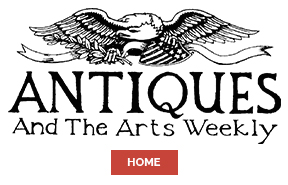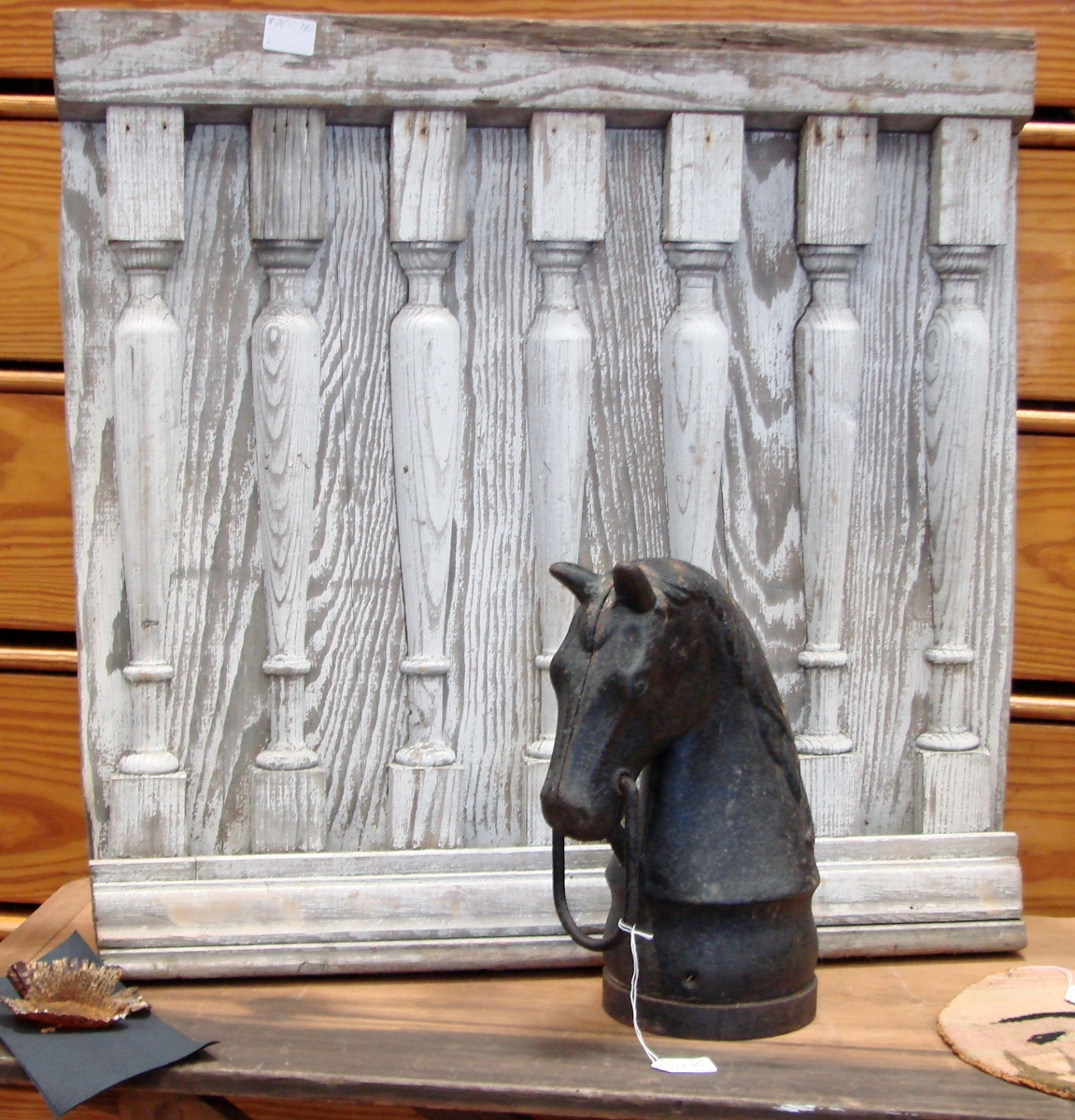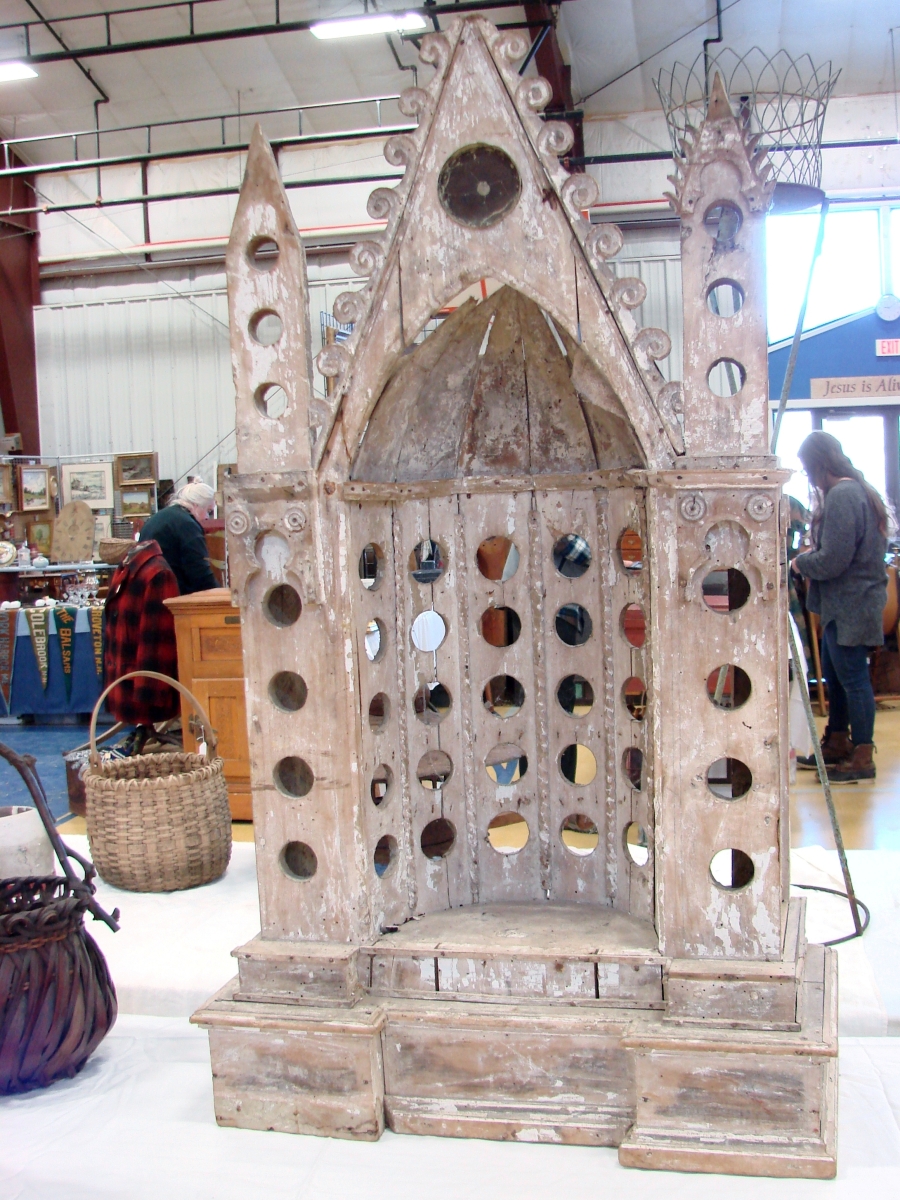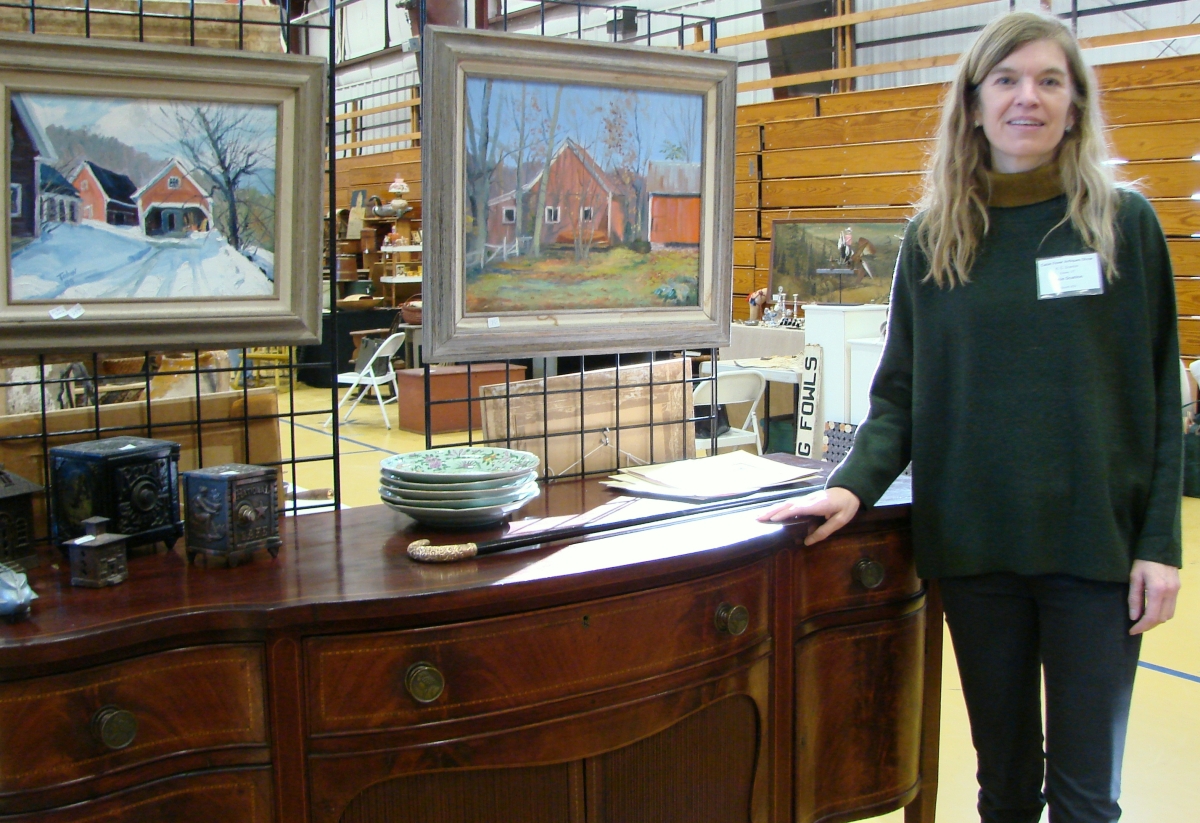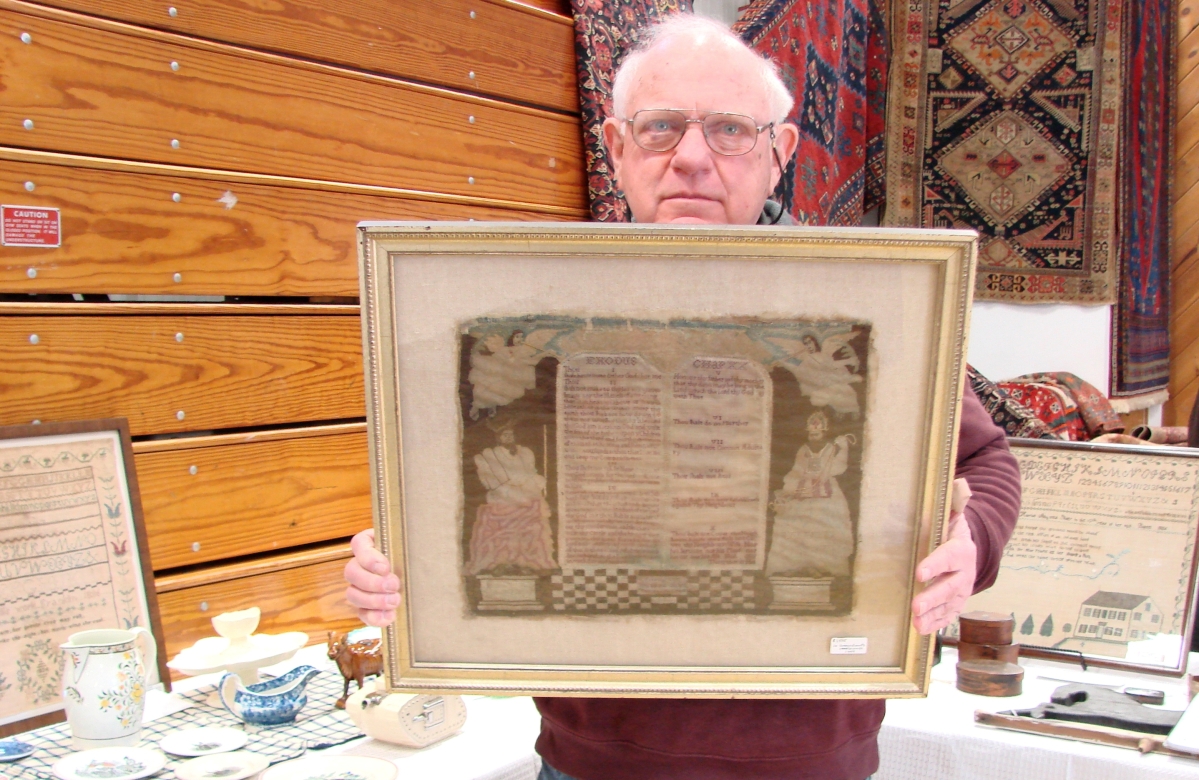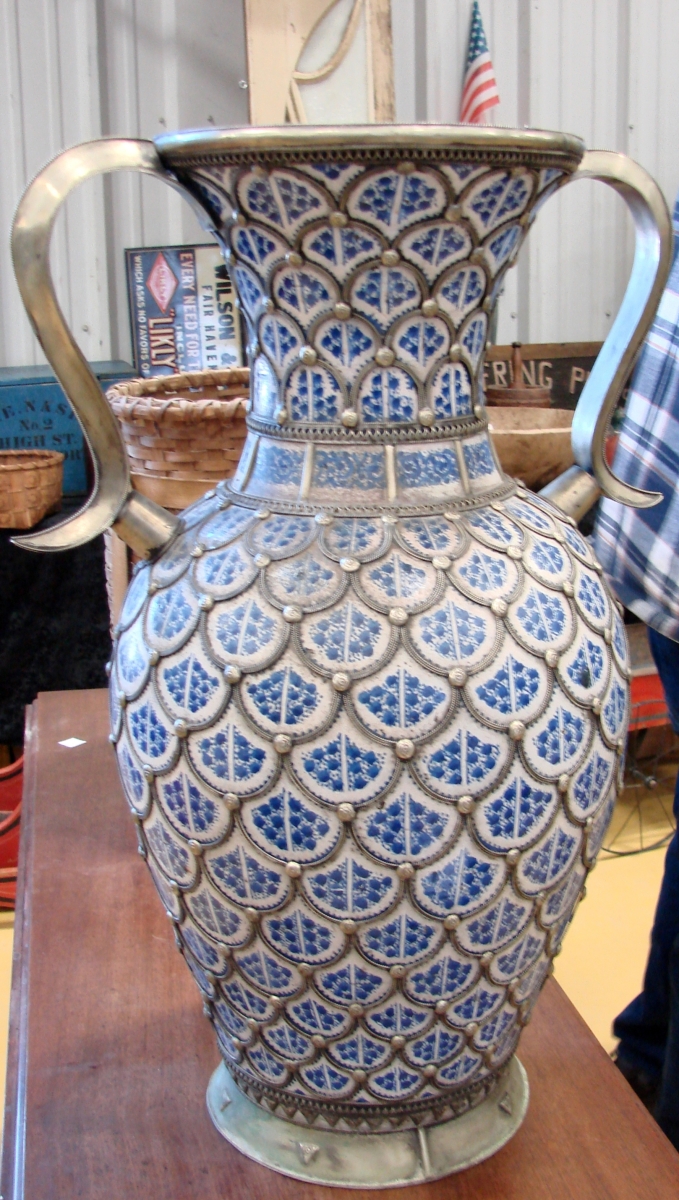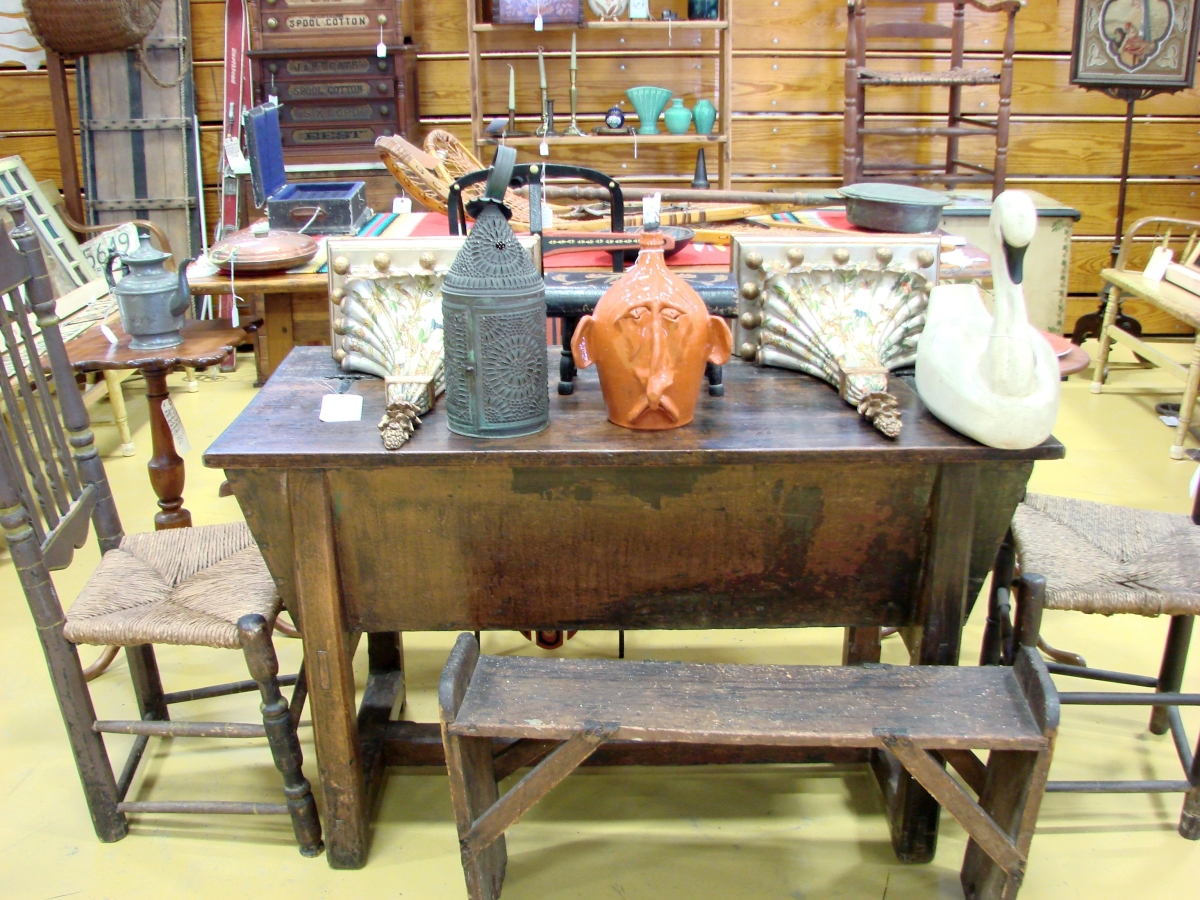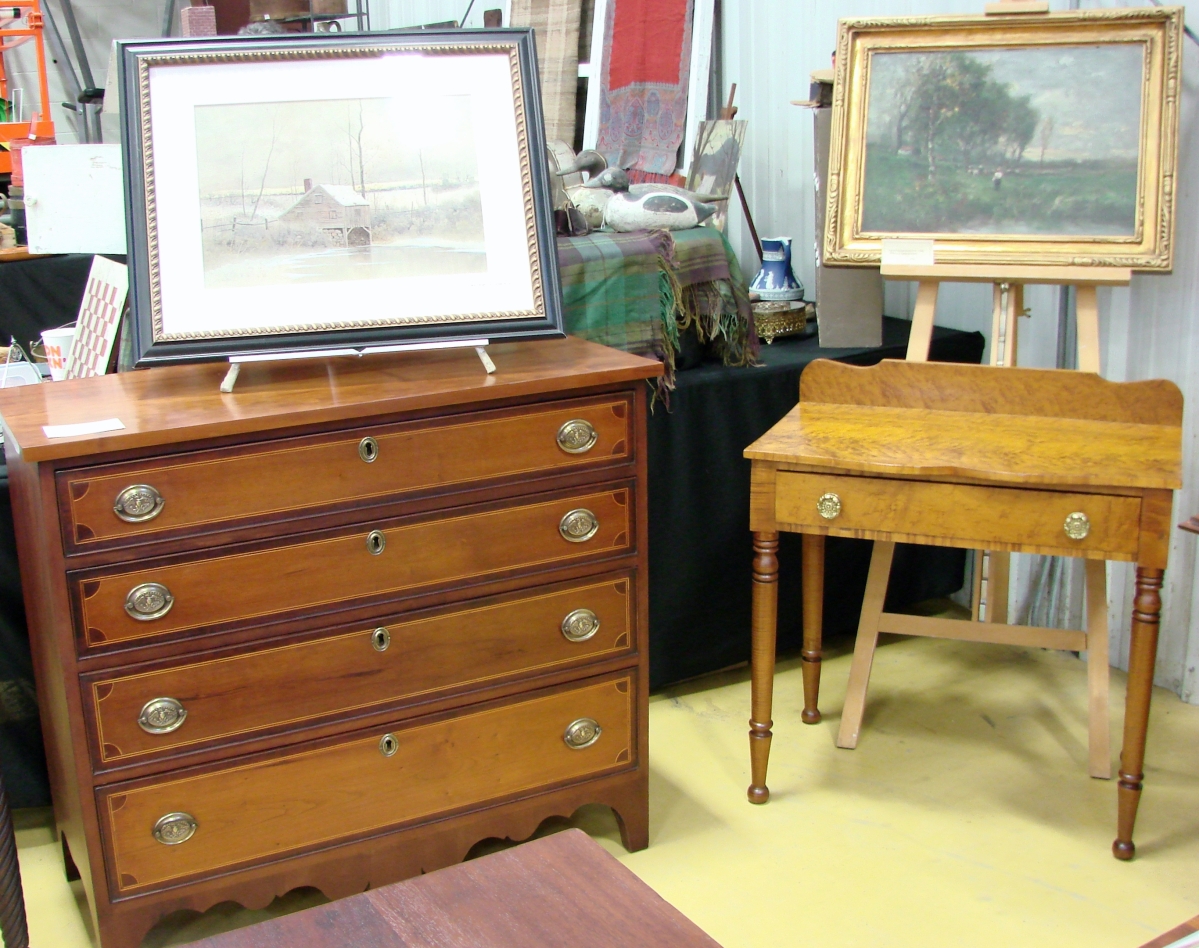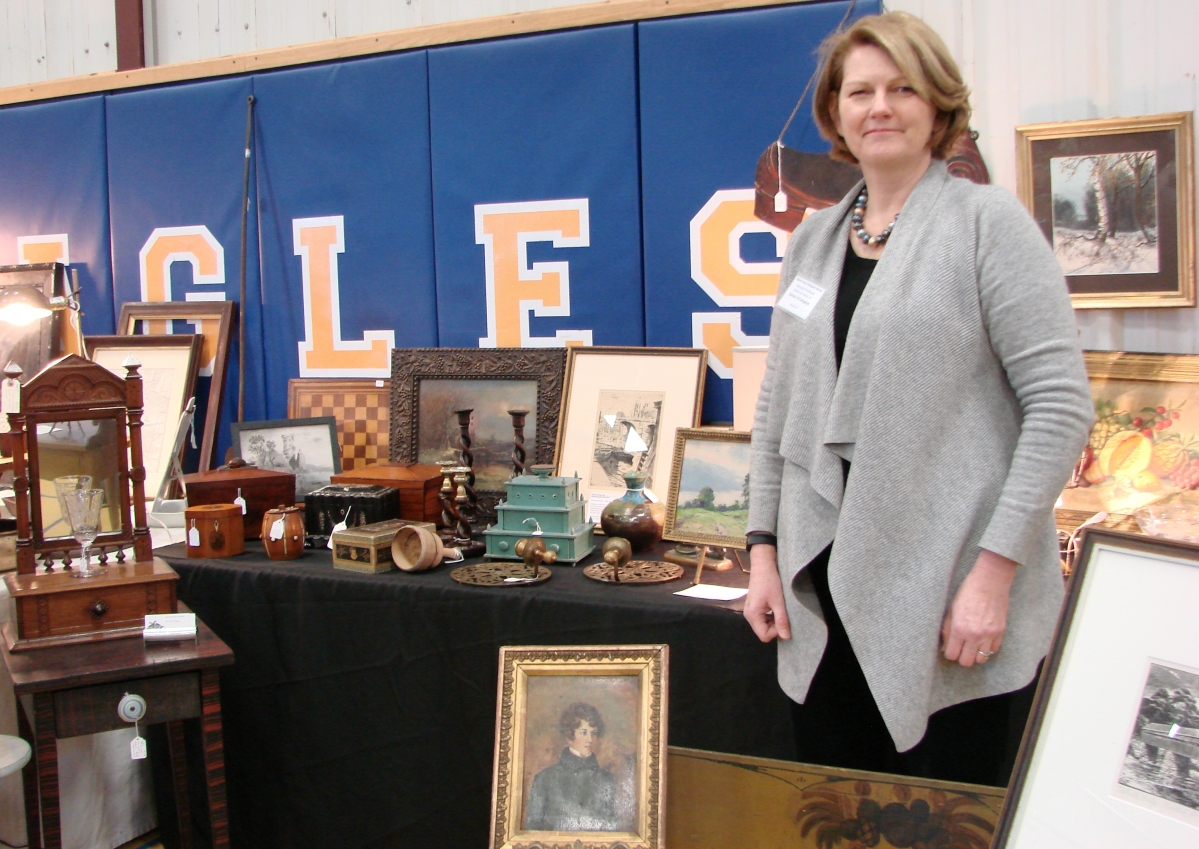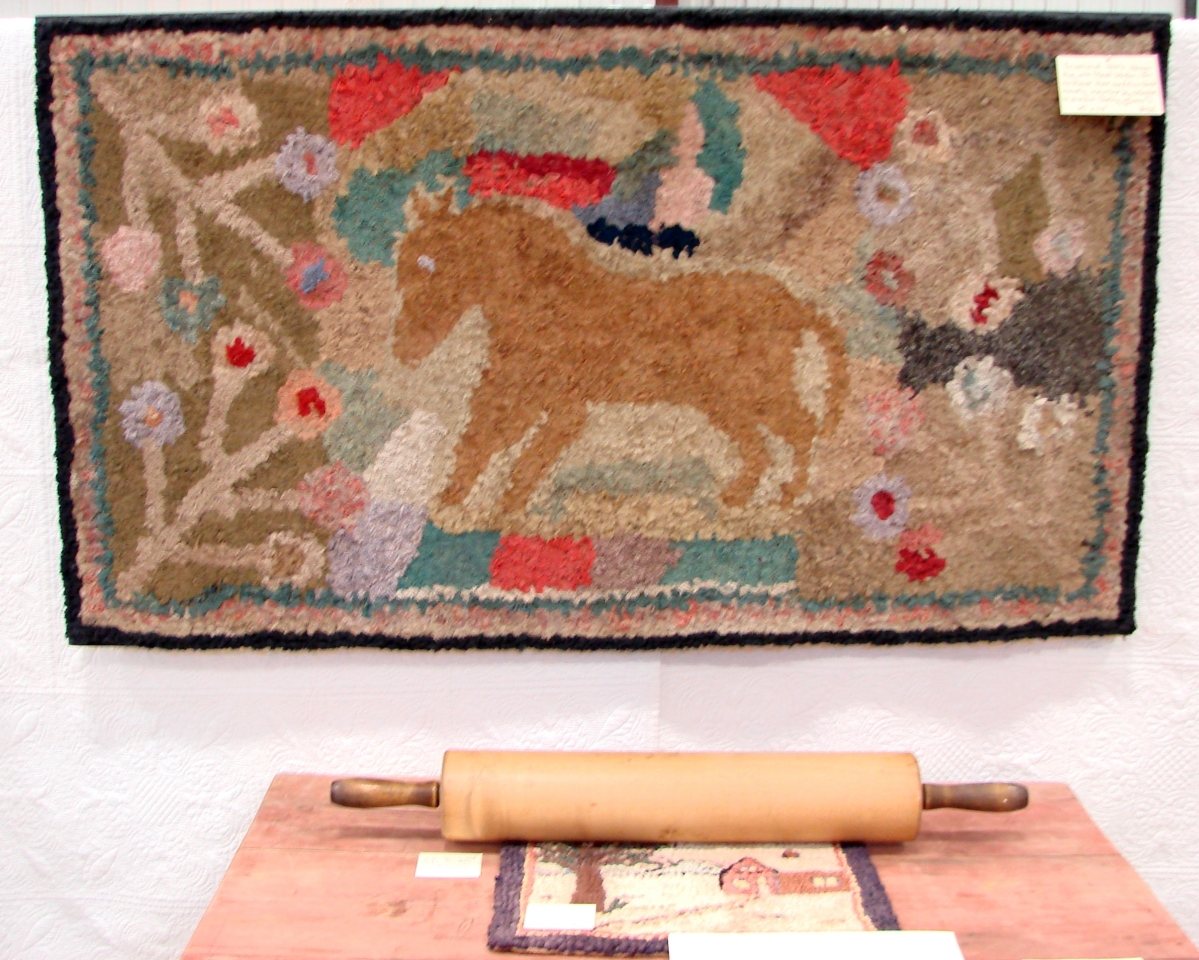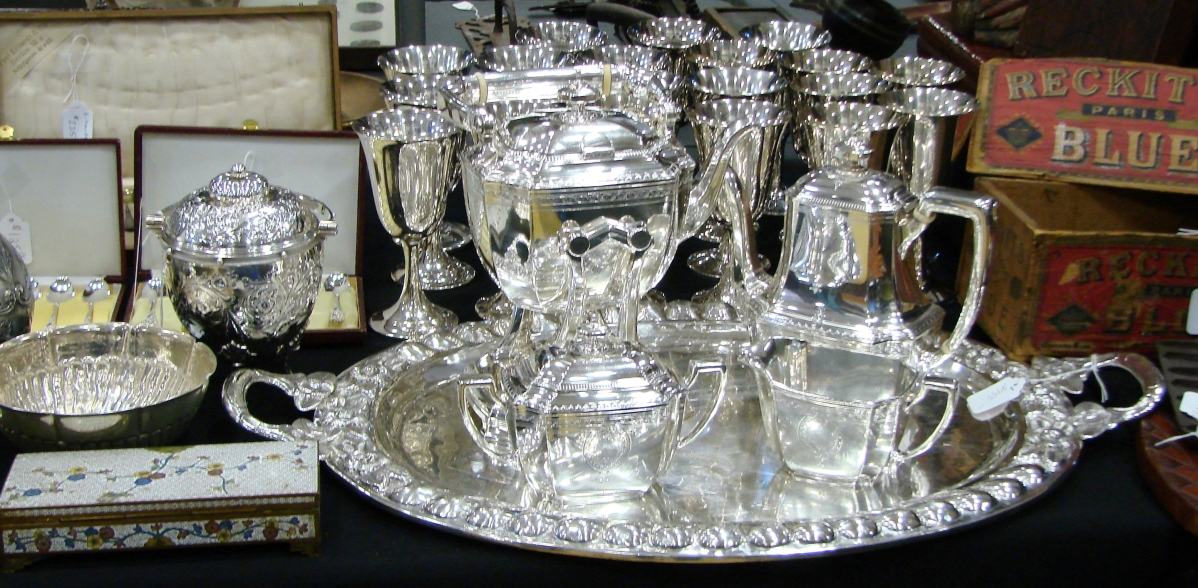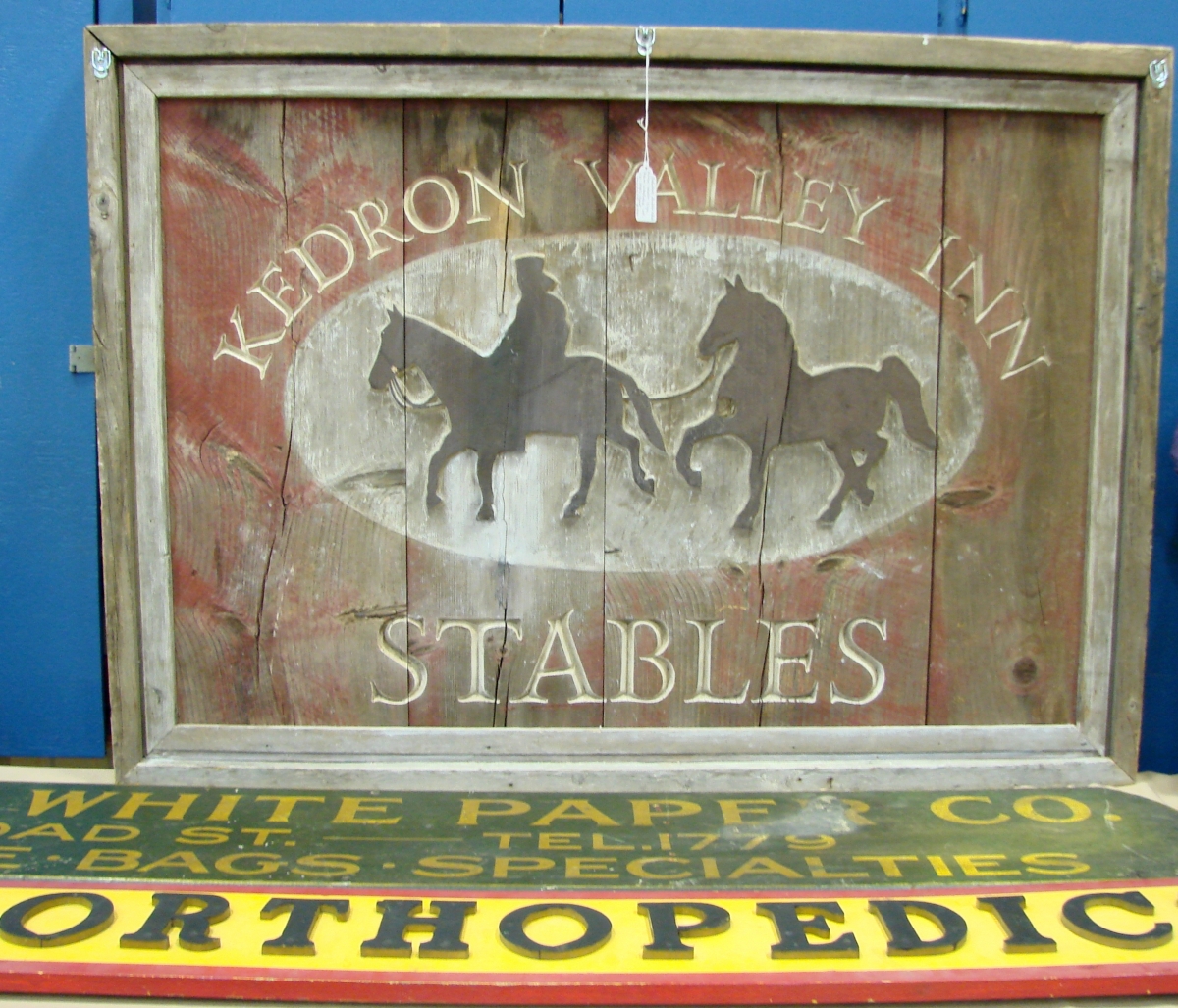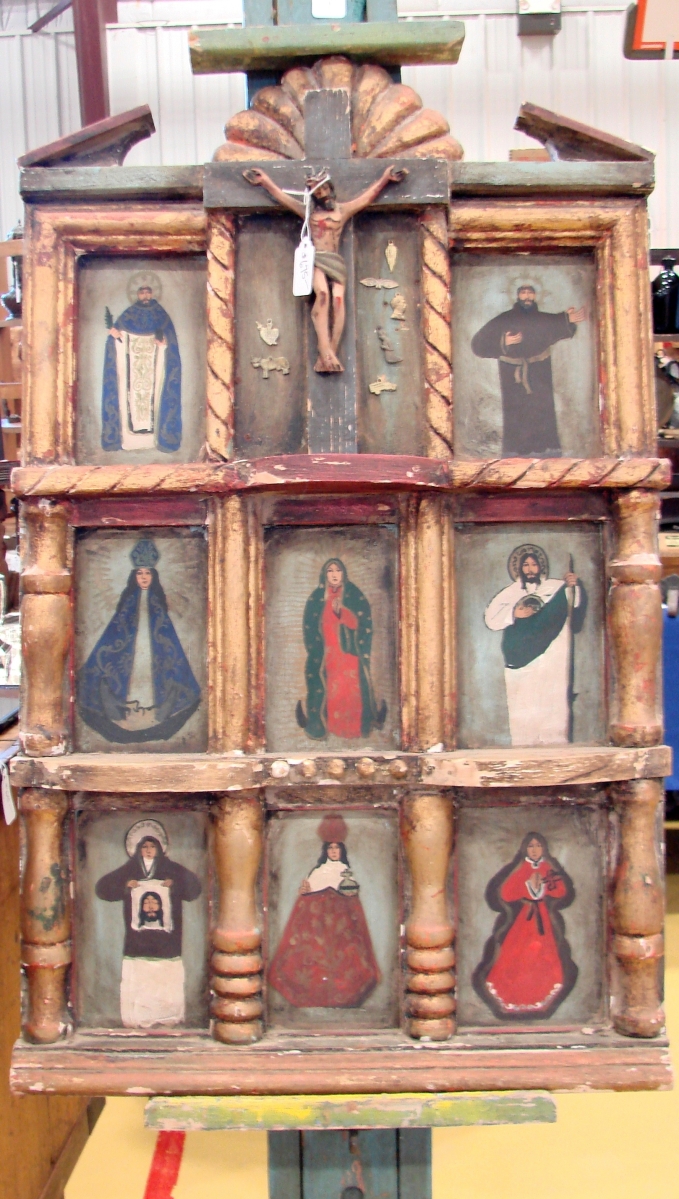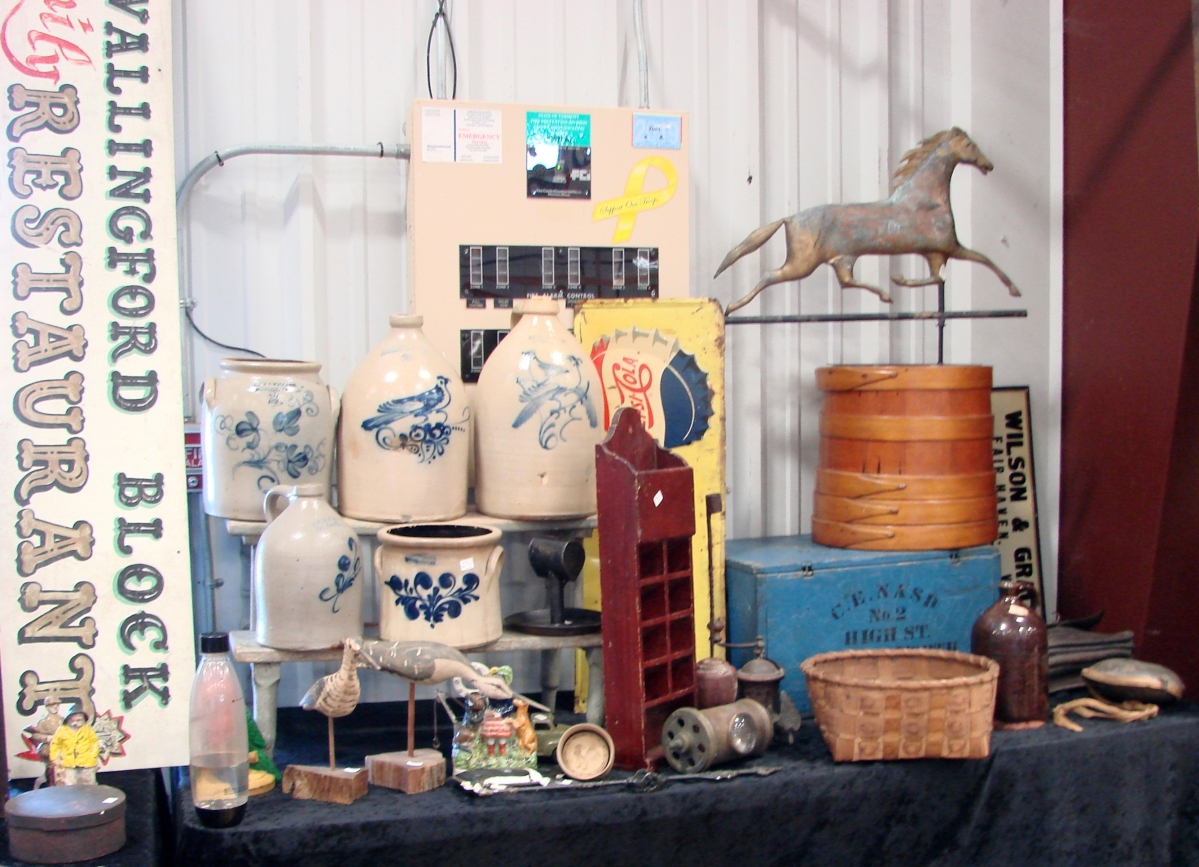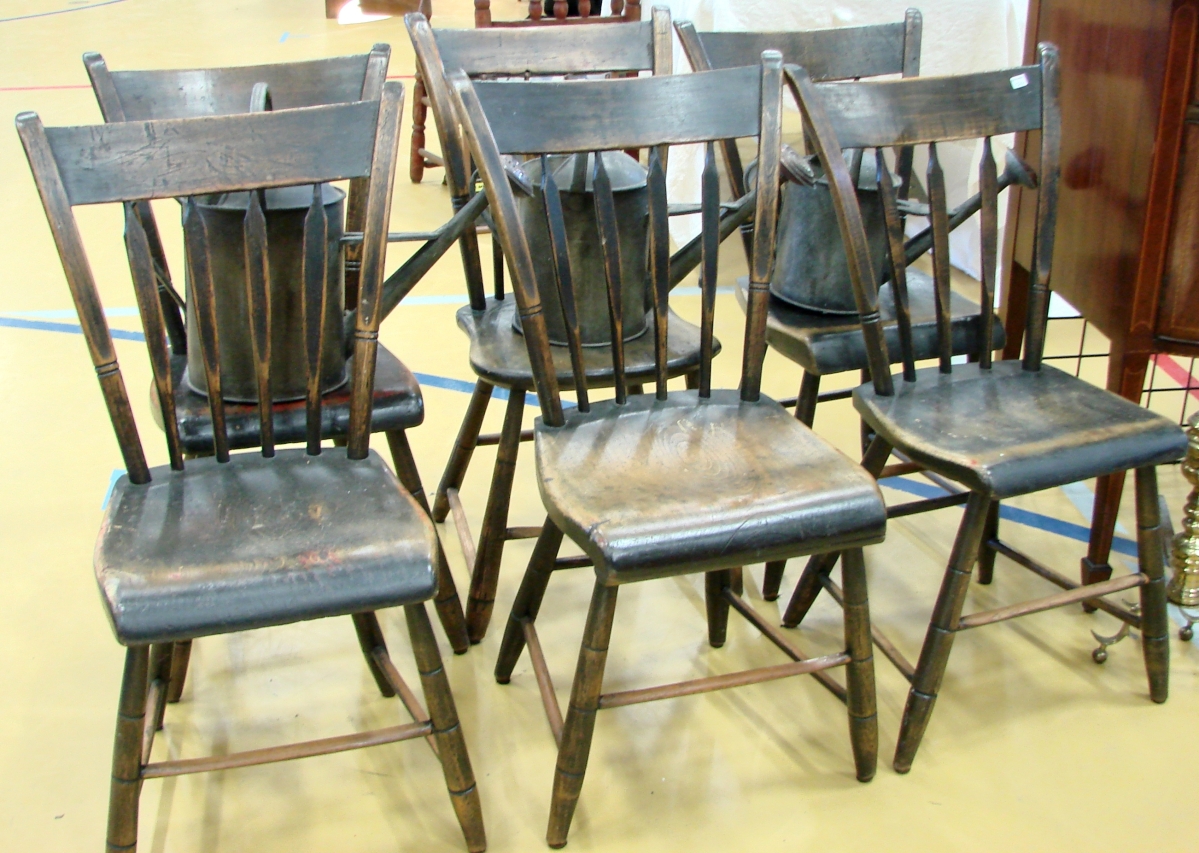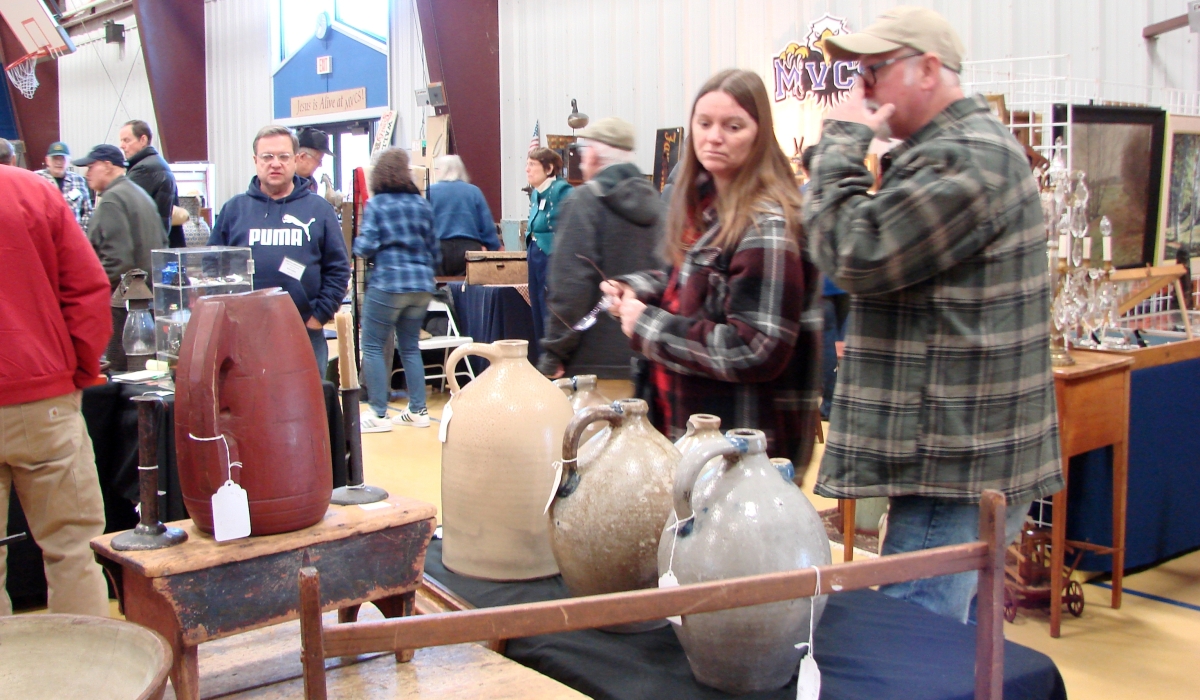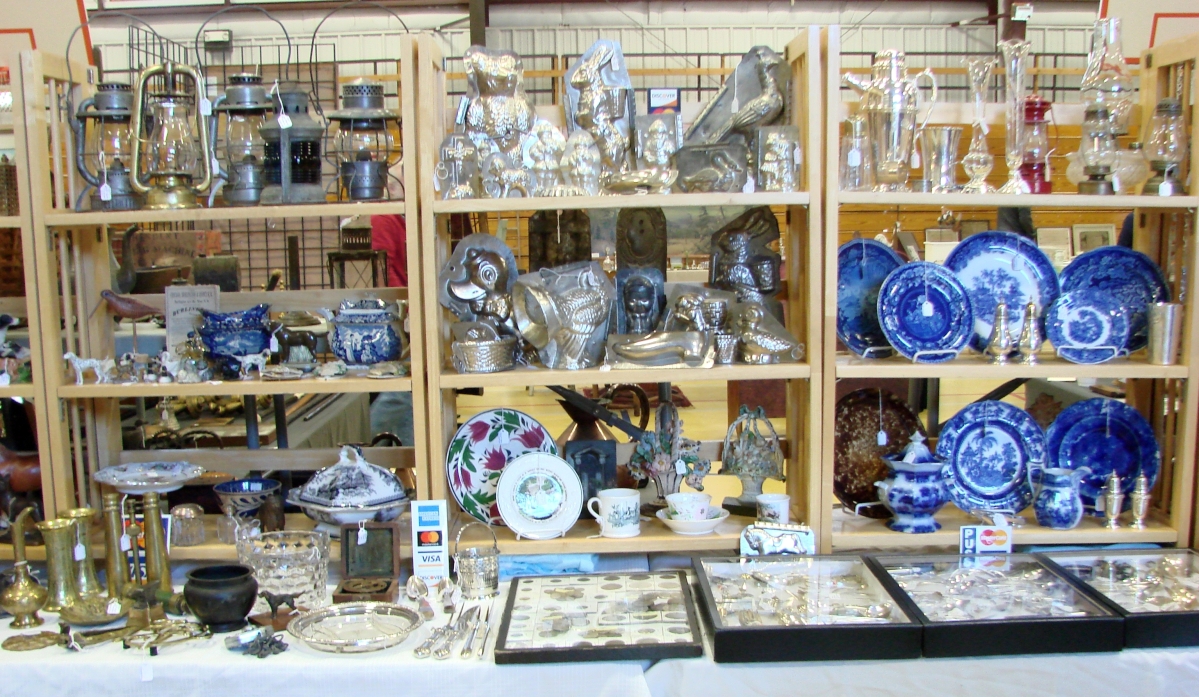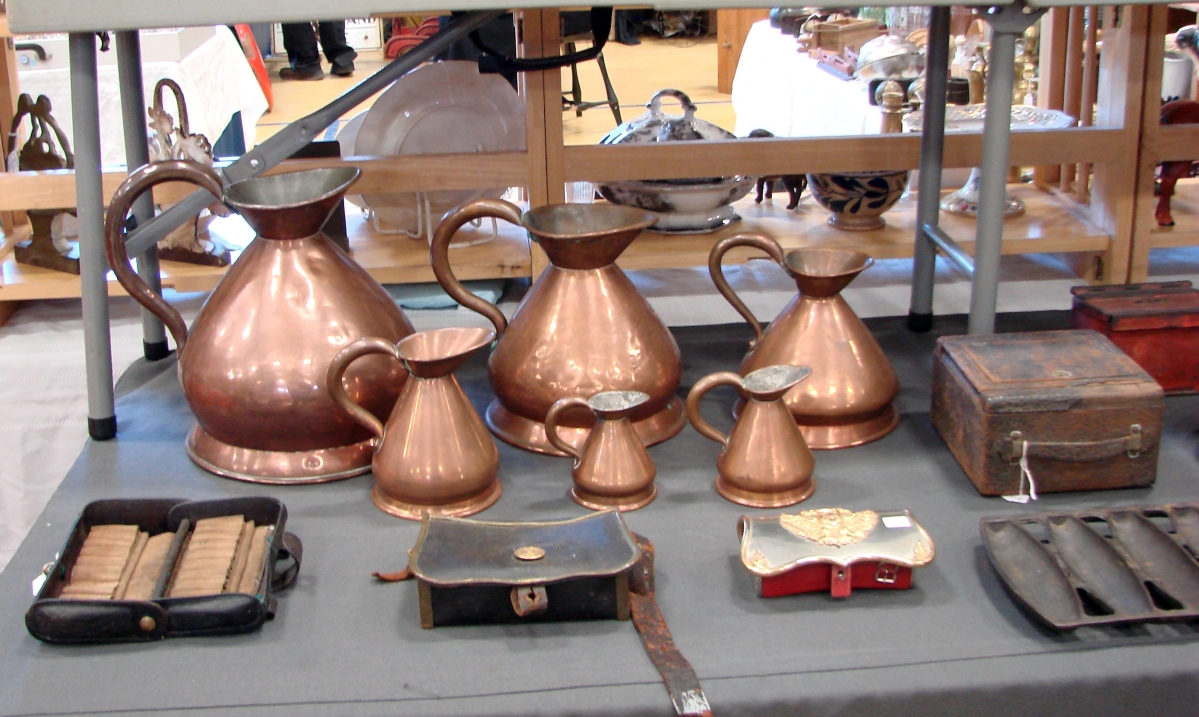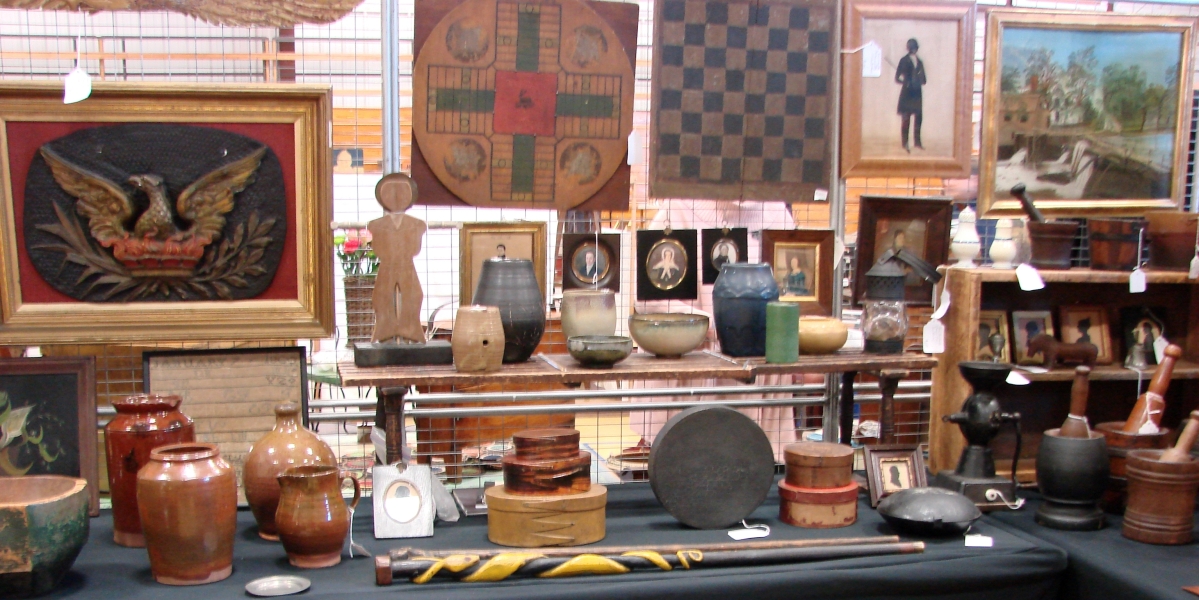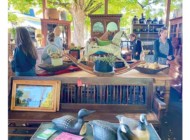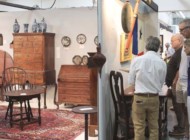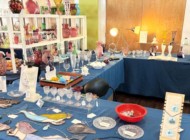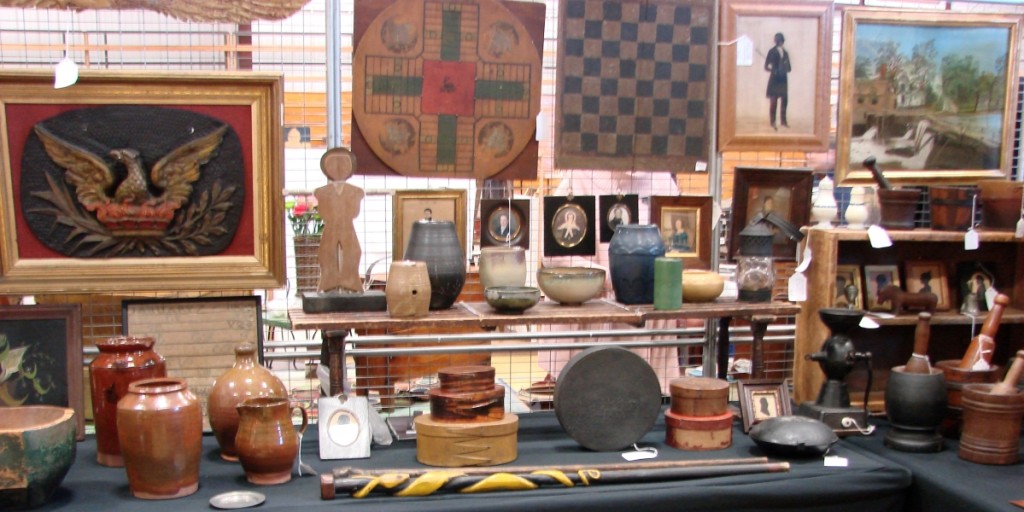
Brett Cabral, Salem, N.H., had some art pottery and four pieces of studio pottery by Edwin and Mary Scheier. Although usually showing earlier material, Cabral said that he personally had an interest in Twentieth Century pottery.
Review and Photos by Rick Russack
QUECHEE, VT. – “Cabin Fever” is the right term for this annual winter show that was conducted on February 15. It was a few a degrees below zero on the thermometer, but Vermont and New Hampshire dealers and collectors had obviously had enough of staying indoors. The attendance was strong and sales were brisk, with furniture being carted out a half an hour or so after opening, along with numerous bags and small boxes.
The “flavor” of the show is Americana, but there was plenty of other material, some of which was clearly European, and there were some midcentury items among the earlier, vintage Americana. Although it’s not a large show – about 30 dealers – the offerings were diverse. One booth with traditional stoneware had some Scheier art pottery; one booth with early ceramics had a leather Ralph Lauren ottoman. There was a large silver overlay Moroccan vase, Eighteenth and early Nineteenth Century formal and country furniture, wooden ware, hooked rugs, trade signs, samplers, early ceramics, Tiffany silver and much more.
Martin Ferrick, Lincolnville, Maine, always brings a booth full of formal, late Eighteenth and early Nineteenth Century American furniture. He had an unusual circa 1810 four-drawer chest that he thought had been made in Shaftsbury, Vt., because of the unusual scalloping on the base, and because that was where he purchased it. It was cherry with inlaid banding on the drawer fronts. It would have been easy to overlook its most unusual feature. In each of the four corners of the inlaid drawer fronts was a decorative feature, what appeared to be a quarter circle of a darker inlay, bordered by a lighter strip. But it wasn’t inlaid; each had been painted to imitate inlay. Why? Good question. Was it a very local technique? Used by a particular but as yet unidentified cabinet maker? Ferrick said that he had never seen this type of decoration before, and he’s been dealing in Vermont furniture for years. The chest, refinished and ready to go in any home, was priced at $1,750. He also had, among other things, a cherry fall front desk on a bracket base. The scalloped interior had hidden drawers, and the piece was priced at $1,850. He said it originated in the Connecticut River Valley.
Another unusual early piece, in another booth, was a large mahogany Chippendale document box with a till and five separate locks. It belonged to the Horse and Bear Antiques of Norwich, Vt. The price was $450. Kyle Scanlon, Essex, Vt., had an inexpensive assembled set of six arrowback plank seat chairs priced at $150. A couple of days after the show, he said that it had been a good show for him, and added that most dealers had noted that it was “solid” for them as well.
One of the earliest samplers, probably deserving more research, belonged to Mike Weinberg, West Pelham Antiques, Pelham, Mass. It was dated 1744 and depicted angels, seated biblical figures, and the Ten Commandments were spelled out on the two tablets. It was priced at $1,800. Other samplers in his booth were priced from $200. He also had a selection of early Staffordshire, including a group of about 20 cup plates priced from $125 to $1,900. Partridge Hollow Antiques, Milton, Vt., also had several pieces of Staffordshire. The dealer is well known for offering a wide assortment of silver, specializing in serving pieces, and a selection of food molds. Among the most unusual of the molds was a three-part turkey mold priced at $1,000. Others started at $25.
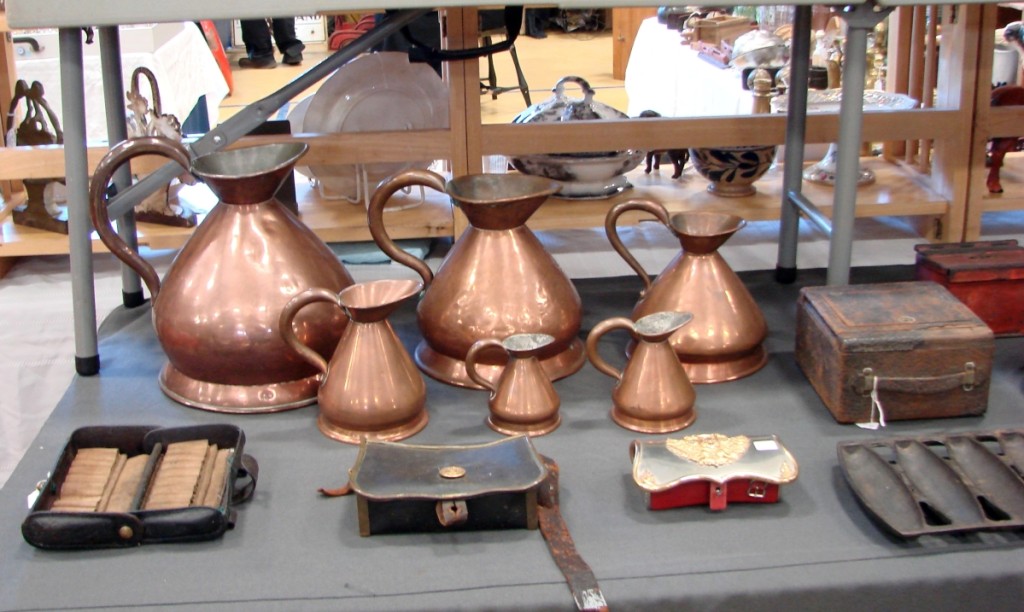
George Bittner and his wife Mary, — Yankee Ingenuity Antiques, Chester, Vt. — are second-generation dealers. Their booth had a set of six copper measures, from 1½ gills up. The set was priced $395. The booth also had a stick-and-ball cabinet priced $195.
While there was not a lot of mid-Twentieth Century material on the floor, Mike and Lucinda Seward, Pittsford, Vt., had a leather Ralph Lauren ottoman priced at $225, a good buy if compared to online sellers. Brett Cabral, Salem, N.H., usually has a booth full of stoneware and other Americana. This time, nestled in among the redware and other early items were four pieces of Scheier midcentury pottery, including a large black pot and a few pieces of art pottery. The Scheier pieces were priced from $300 to $700.
Not everything was American. Mike Winslow, West Rutland, Vt., had an Italian reliquary with some interesting history. It had been made to display religious statues, and Winslow thought it dated from the 1700s. It was intact, but most of the original painted surface had succumbed to nature. That was not a surprise since it had been rescued from heavy flooding in Florence, Italy, in 1966. How long it had been in the water is anyone’s guess. It was priced at $1,300. Ian McKelvey, South Windham, Conn., had a heavily carved English chair that was probably from the Eighteenth Century or earlier, and he paired it with a walnut Italian-style table about which he said, “not old.”
John Bourne, Pittsford, Vt., did not have as many large wooden carvings as he usually does, but he had weathervanes and several trade signs, one of which might have been the most interesting sign in the show. It was a large, double-sided, well-weathered sign for the Kedron Valley Inn Stables. The central carved oval image depicted two horses, one with a rider. The overall background was weather-worn red, and it was outlined with a weathered white frame. Adding to its interest was the fact that it came from nearby Woodstock, Vt., less than ten miles from the show. Bourne thought it dated to about 1940 and priced it at $1,950. Bourne had other trade signs, as did several other dealers.
There were a number of oil paintings available, two of which were really eye-catchers. Mike and Lucinda Seward had a painting of a rugged outdoor scene, perhaps in the Adirondack mountains with large rocks, misshapen trees and a group of whitetail deer looking alertly at the viewer. The painting was more than 6 feet long, signed by Clay Seagears. An artist by that name was director of conservation education for the New York State Conservation department, who had designed a number of duck stamps in the 1950s. The painting was priced at $1,450. K.C. Scanlon, Essex, Vt., had an impressionist portrait of a fisherman with his catch of the day and fishing paraphernalia. It was signed by Peter Miller, but little information was available about the artist.
Greg Hamilton, Stoneblock Antiques, Vergennes, Vt., resumed management of this year’s show after a break of a few years. A few days after the show he said that attendance was slightly up from previous years and the traffic was steady all day. “As far as I could tell, it was a solid show,” he said. “Apparently just about everybody had some sales, and no one said to me that they hadn’t. I saw furniture going out, and I was told that a sign had sold for $1,600. When none of the exhibitors are unhappy, you know it was a good show.”
For additional information, contact Hamilton at 802-989-1158 or visit http://cabinfeverantiques-show.com.
